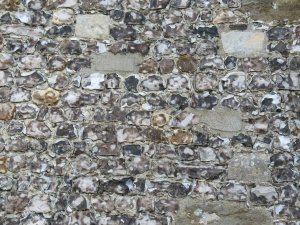How long should a garden makeover last?
Ann and I were sitting down planning a new season of information shows, that we are calling ‘Gardenesque’ on our ‘Growing Trends’ podcast ( you can find us on iTunes) when an interesting question popped up.
‘How long should a garden makeover last?’

There are really two parts to this:
The first is how much durability should we design and build into a project?
I recall many years ago, when we first started our ‘Designer Drives’ division, using the now almost standard dry lay method, we consulted the manufacturers and settled on a standard that was expected to last 2 million yup 2 million axle loads – that’s a lot of traffic in case you wonder.

In the case of a brick drive as above, it would also depend on climatic conditions ( although this drive is built with an engineering brick so basically impervious to normal cold conditions), as well as vehicle actual weight ( again this drive should withstand easily a 20 ton load).
I think we had two occasions where a client called to ask what they should do because the drive had deflected about 20mm ( 3/4 inch) in an area, we simply lifted and relaid the area without charge for the client.
So for a dry lay paving the construction is likely to outlast the clients .
A mortared terrace like the first picture or a mortared brick area such as below is a little different.

The most likely area to fail first is the pointing, which by definition is a weaker area than the bricks, here we are using a 23kn second hard stock brick, with a 1:1:3 cement,sharp sand, soft sand mix. My feeling is that it should comfortably last 20 years. After which it might need some re-pointing.
This leads on to the second part.
After how many years would a project be considered old enough to change?

This timber step detail is definitely a point in case, being made from old sleepers that contain among other things tar – something to avoid in today’s garden landscape.
The answer would most likely be when the client wanted a change or a new owner was looking for something different.
Would this then mean completely changing the entire area, or perhaps utilising some of the materials in a newer look, particularly if they were ‘natural materials’ such as natural bricks, and stone which tends to last for a great many years?

This white trellis, terracotta pot of herbs and brick paving was completed 30 years ago, it’s not really that out of place today is it?
So now the question becomes, over the past twenty five or so years what has really changed in how we approach a landscape project – is it just where we live and work?
 Here we have what I would considered an ageless feature, which being in the UK is probably subject to a preservation order. I can only imagine how much this wrought iron and stone feature would cost to build today – that;s if you could find the wrought iron and someone to ‘lead’ caulk the uprights into the stone !
Here we have what I would considered an ageless feature, which being in the UK is probably subject to a preservation order. I can only imagine how much this wrought iron and stone feature would cost to build today – that;s if you could find the wrought iron and someone to ‘lead’ caulk the uprights into the stone !
Is it the availability of skilled labour?
Or is it the availability of new tried and tested materials or methods?
 This very old ‘knapped flint’ wall requires some age old skills to build, not least because it needs a lime mortar ( one that doesn’t contain cement) for it to work, this is because the flints are impervious to water and without some movement in the joints the wall would crack.
This very old ‘knapped flint’ wall requires some age old skills to build, not least because it needs a lime mortar ( one that doesn’t contain cement) for it to work, this is because the flints are impervious to water and without some movement in the joints the wall would crack.
The flints are not really suitable for many of today’s landscapes as they are very sharp and likely to harm someone who casually ‘knocks’ against them.
One area that we probably do need to keep for many more years are mature trees, although I’ve seen some pretty large specimens moved.

I guess as always it is in the hands of the client as to what they would like to achieve, and for us to ‘solve the practical problems’ that may arise…
 Which is why for almost 40 years I can honestly say it’s been really good fun……… what say you?
Which is why for almost 40 years I can honestly say it’s been really good fun……… what say you?
I think it’s all in the details…..

You can listen to Ann & Chris’s weekly podcast at www.growingtrends.org
Views: 8







